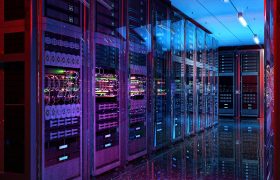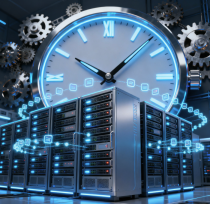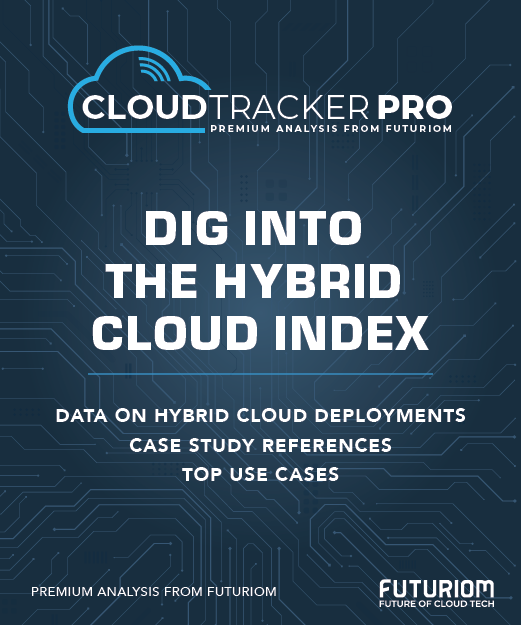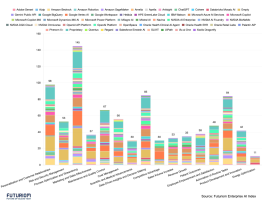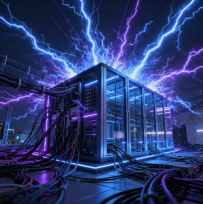Arista Stakes Its Claim in Neocloud Territory

At an analyst day in September, Arista made its case for serving AI datacenters. That includes the crop of neoclouds, the GPU-laden clouds purpose-built for AI.
Networking is just one piece of what neoclouds need, but it’s a vital one. GPU idle time is costly, and AI relies on many parallel tasks, offering plenty of chances for network congestion.
Arista’s play for AI datacenters comes from its work with the so-called cloud titans like Meta and Microsoft. It probably helps that the neoclouds have been hiring out of the hyperscaler ranks. For example, CoreWeave last year hired COO Sachin Jain from Oracle Cloud and Chen Goldberg, senior VP of engineering, out of Google. There’s no indication that CoreWeave is talking to Arista; the point is that neoclouds might be coming to Arista not from a place of envy, but from a place of direct experience.
Between the analyst day and a conversation with Martin Hull, Arista’s VP and GM of cloud and AI systems, here’s how we’re looking at Arista’s neocloud opportunity.
Sizing the Opportunity
Arista is on target to be a $10 billion company next year, executives announced at the analyst day. That’s 20% revenue growth over 2025 (the actual 2026 forecast is $10.5 billion in revenue) and two years ahead of schedule—and yes, AI is driving the pace. That includes 70% growth in AI networking revenues, to $2.75 billion in 2026 versus $1.5 billion this year.
CEO Jayshree Ullal and CFO Chantelle Breithaupt announced these numbers at the analyst day. But the company tempered some expectations. Its forecast for operating margins, currently around 47%, has them dropping to 43% to 45% during the 2026-2029 timeframe.
That disappointed Wall Street, but Arista has good reasons for being cautious. The AI market, especially the neoclouds, seems to change continually; it’s worth hedging a bit in case of surprises in areas like pricing. As the AI market blossoms, Arista will be investing more in its sales team. It’s also going to be investing more heavily in the campus network, a push headed by President and COO Todd Nightingale, formerly of Cisco.
Custom Neocloud Designs in the Works
Arista’s leaf-spine network connects racks throughout the datacenter, and it has 400G and 800G products to connect the spans between datacenters. But Arista says it has some special opportunities inside the rack—the scale-up network connecting GPUs to one another—where it’s working with neoclouds on custom solutions.
At the analyst day, executives talked about this being a 2027 opportunity rather than an immediate one. Wall Street analysts seemed a bit disappointed by that, but as Hull explained, the timeframe reflects the custom nature of the work. Each neocloud developed quickly and independently, and there hasn't been much time for commonality to emerge. Turning that work into custom products, and then standard products, means playing the long game.
That could change as more companies adopt rack-scale and even entire turnkey datacenter layouts from the likes of NVIDIA, Dell, HPE, and Supermicro. For now, based on Arista’s experience, there’s fragmentation.
White Box? Long Live the Blue Box
Another tool that neoclouds might find attractive is Arista’s concept of the blue box. The company coined the term earlier this year; it’s Arista-provided hardware running the customer’s choice of OS. It’s meant to be a happy medium between a white box (perceived as cheap) and a full-blown Arista switch (perceived as expensive).
This has been a vehicle for hyperscalers such as Meta, which runs its own Facebook Open Switching System (FBOSS) on Arista blue boxes. So Arista's found cloud titan traction and believes it can captivate neocloud customers as well.
It’s a bit counterintuitive, because Arista puts a lot of pride into its EOS operating system. A hallmark of its franchise is that one OS image runs across its portfolio, as opposed to the multiple operating systems of, say, Cisco. But the company’s other hallmark is a deep obsession with the engineering behind scale and reliability.
So, the benefits of the blue box include Arista’s hardware touches like deep packet buffers. It also includes Netdi, short for Network Diagnostic Infrastructure, which collects and correlates diagnostic data at the lowest levels—Layer 1 events, optics, and so on.
AVA Isn’t Just a Splashy AI Demo
Of course, Arista has its own AI story too. AVA, the “autonomous virtual assistant,” is a new tool for Cloudvision: a natural-language bot that draws information from sources including Netdi and NetDL, Arista’s centralized data lake that stores all network activity and tracks the state of every network device.
Arista stresses that AVA's not a just chatbot that you query; it actively oversees the network and sends alerts of pending trouble such as network jitter or faltering optics. That said, it can also be a chatbot for manual troubleshooting or general AIOps.
AVA itself is flashy and certainly useful, but it’s arguably not the star here. AVA highlights Arista’s obsession with fine-tuning granular details in order to maximize performance. Products like NetDL and Netdi—the things underlying AVA—don’t thrill investors or generate splashy headlines. But to neoclouds keen on monitoring the most granular network processes, they're gold.
Futuriom Take: Arista's success with the clouds came from focusing on functionality rather than features. Its obsession with low-level details should play well with the AI crowd. Arista is right to be cautious with forecasts, though; this economy is still in flux, with plenty of unknowns in terms of pricing and buying patterns.

